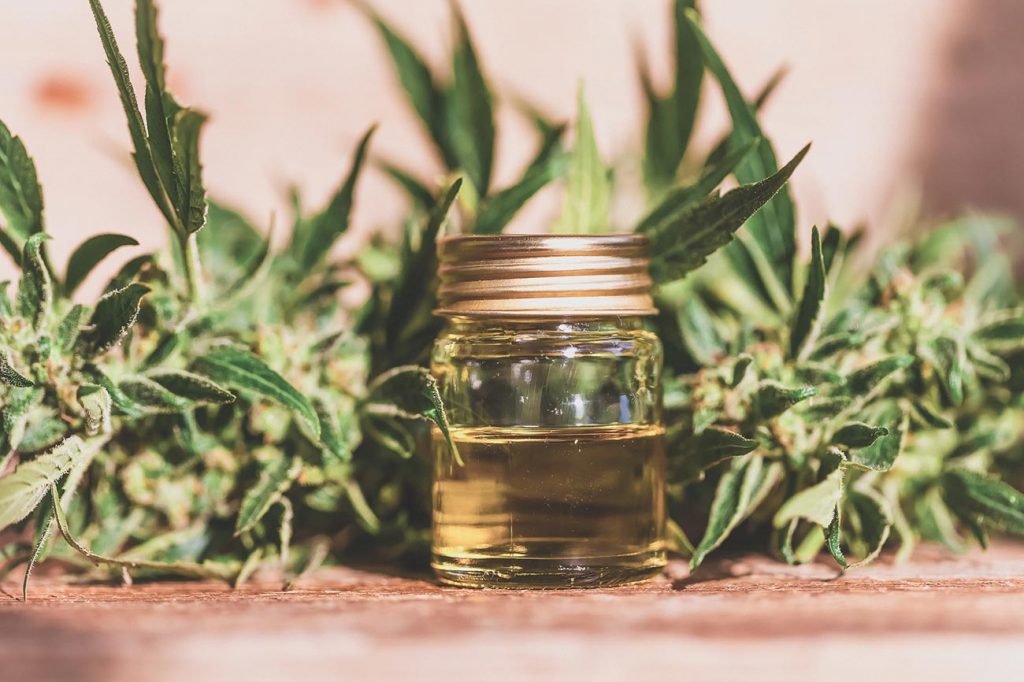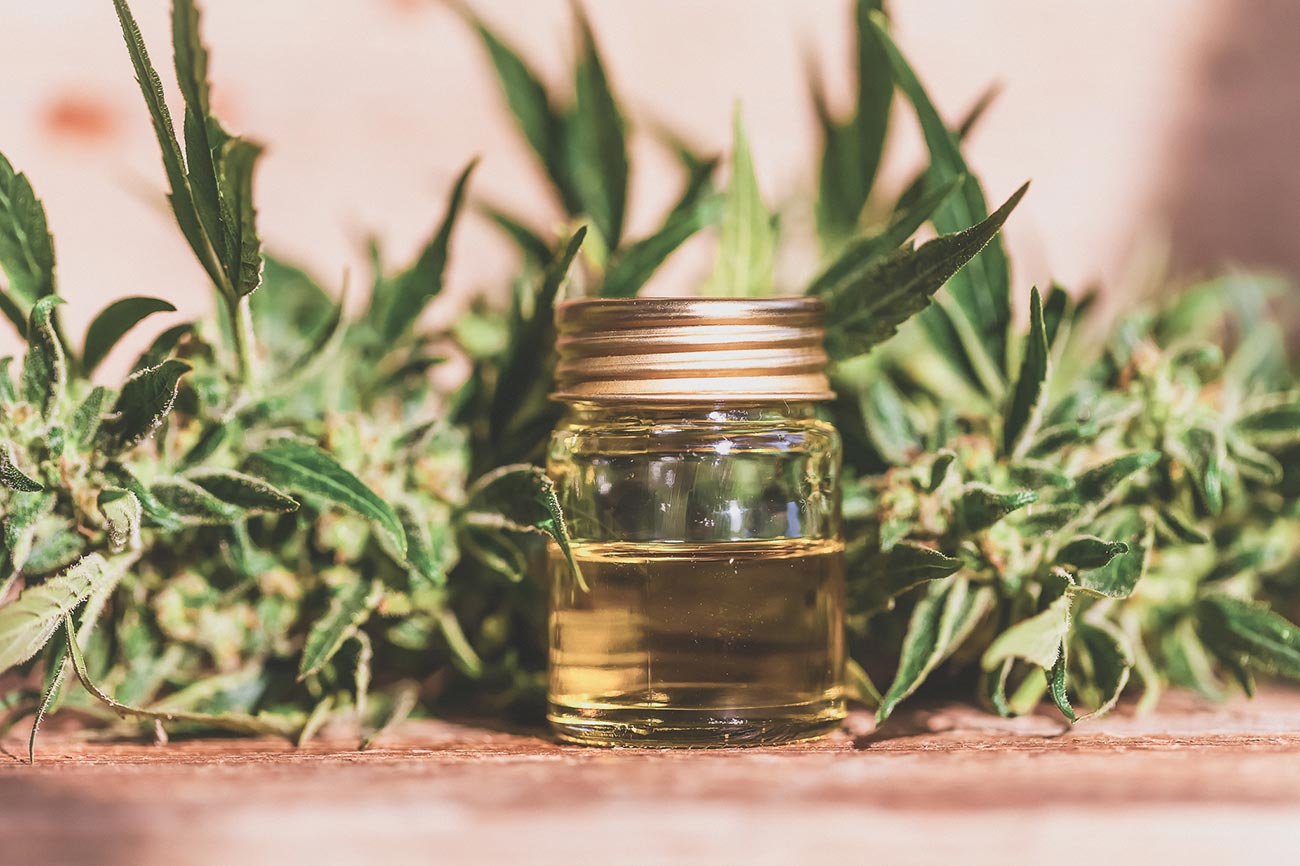
By Meg Kramer,
Have you noticed the growing buzz about CBD oil and its potential health benefits? It seems like more and more people are talking about it every day. But just what is CBD?
You might have seen a viral YouTube video featuring a major league baseball player. He describes using CBD to manage pain and stop using prescription painkillers.
Maybe you read the article in Forbes discussing a survey in which CBD users reported being able to reduce their reliance on traditional medicines.
Or perhaps you follow scientific journals, and know that researchers are publishing study after study suggesting that CBD can help people with conditions ranging from epilepsy to schizophrenia.
CBD stands for cannabidiol, and is one of a group of compounds called cannabinoids. These are natural chemical compounds which come from plants in the genus Cannabis, and they interact with the body in a variety of ways.
Although CBD was first isolated in 1940, it has only recently been the focus of rigorous scientific study. This new body of research supports the many testimonials and anecdotal evidence which suggest that CBD has enormous healing potential.
WHAT IS THE RELATIONSHIP BETWEEN CBD AND MARIJUANA?
Humans have been using and cultivating cannabis for thousands of years, developing different strains for different purposes. Breeders hybridized some strains of one cannabis variety, Cannabis sativa, to produce plants with long, fibrous stalks. These were ideal for producing fibers to be used in cloth, rope, and paper, and are still used to make those products today.
Other varieties of cannabis, including some strains of Cannabis sativa and Cannabis indica, came to produce plants with shorter stalks, more flowers and more leaves. Growers bred these strains to be suitable for medicinal, recreational, and therapeutic purposes.
SO, WHICH PLANT IS WHICH?
Today, we refer to the tall, fibrous cannabis varieties as industrial hemp. Hemp contains only trace amounts of THC, so consuming it won’t give you the giggles or make you feel paranoid.
The floral, leafy strains, on the other hand, are commonly known as marijuana. These plants contain significantly higher quantities of delta-9 tetrahydrocannabinol, or THC. It’s the most well-known of the cannabinoids, and has also been the subject of the most scientific study. This is the substance responsible for the feeling of being high.
AND WHAT DOES THAT HAVE TO DO WITH CBD?
Unlike THC, CBD is not intoxicating. In fact, it may even counteract some of the effects of THC. For this reason, more and more medical marijuana growers are breeding some strains of cannabis to have higher ratios of CBD to THC, in order to produce different therapeutic effects.
Marijuana isn’t the only source of CBD, though. Industrial hemp, the fibrous, low-THC strain of cannabis, can produce significant amounts of CBD as well.
It’s also possible to produce the molecular structure of CBD in a laboratory, although studies indicate that synthetic CBD interacts differently with the body, compared to CBD isolated from cannabis.
Like other cannabinoids, CBD works by interacting with receptors found throughout the body—in our organs, connective tissues, glands, immune cells, and brain. It is able to do this because it closely resembles chemicals that the body creates naturally. This system of chemicals and receptors is known as the endocannabinoid system.
The endocannabinoid system is something that we share with every other vertebrate on the planet. The system’s receptors perform different functions depending on their location in the body. Endocannabinoids can be found mediating the balance of individual cells in the body, governing the body’s response to an injury, and impacting mood and emotions.
Because the endocannabinoid system is so integral to a broad range of vital functions, CBD can impact the human body in a variety of ways. Researchers are studying the mechanisms that are responsible for CBD’s known applications, which include:
- Analgesic – it provides relief from pain
- Anxiolytic – it reduces anxiety
- Anti-ischemic – it facilitates blood flow to the brain and heart
- Anti-inflammatory – it reduces inflammation or swelling
- Antioxidant – it protects the body from harmful free radicals, molecules which interfere with healthy cell functions
- Neuroprotective – it protects nerve cells from damage or deterioration
- Pro-apoptotic – it may cause cancer cells to self-destruct
WHAT ARE THE MOST EFFECTIVE WAYS TO USE CBD?
When a person uses CBD oil, only a percentage of the CBD they consume ends up circulating throughout the body. This percentage is determined by the quality of the product and the method used to ingest it, and is known as the bioavailability of the method. Bioavailability is one of the main factors that determines how effective the product will be.
There are five main methods of taking CBD products:
- Sublingual drops – These drops, which are taken orally beneath the tongue, can have a higher bioavailability. To get the best results, be aware of the potency of the product you are using. If you are using a low-potency drop, the amount of CBD you absorb will be much less than with a high-potency product.
- Tinctures – In these products, CBD is dissolved in alcohol. They have high bioavailability, but it can take a while to feel the effect.
- Vaping – CBD taken through this method has a bioavailability of up to 85 percent, and you will feel the effects almost immediately. However, the effects can also dissipate more quickly than with other methods.
- Edibles – Gummies or capsules make it easy to take CBD, but stomach acid destroys most of the CBD contained in these products. This results in lower bioavailability than other methods.
- Topical products – CBD can be applied to the skin in a cream or oil, with localized effects. This can be a great method for pain relief and inflammation.
WHAT ARE THE DIFFERENT TYPES OF CBD?
In addition to the bioavailability of the method used, the type of CBD used also impacts effectiveness. CBD products can be classified as either full spectrum or isolate.
Full spectrum CBD products contain a range of other compounds that are found in the cannabis plant, in addition to CBD. These include other cannabinoids as well as compounds called terpenes. Research indicates that terpenes may also have medicinal properties, including helping with mood and other brain functions. Researchers have described a phenomenon known as the entourage effect in full-spectrum CBD products. With the entourage effect, the interactions between the cannabinoids and terpenes in full-spectrum CBD products may result in increased benefits compared to CBD alone.
It should be noted that regular use of full spectrum CBD can increase the chances of failing a drug test. This is because a trace amount of THC (not enough to get you high) is present in full spectrum blends. Over time, it can build up in your body, causing a false positive for marijuana use.
On the other hand, isolate is pure CBD, with no other cannabinoids or terpenes. Using isolate CBD allows for precision dosing, which can be a challenge with full spectrum CBD products. For some medical conditions, a precise and reliable dose of CBD is a higher priority than the possible benefits of the entourage effect.
Another benefit of CBD isolate is that you don’t have to worry about any undesirable substances—from pesticides to heavy metals—finding their way into the mix. Nor will it put you in danger of failing a drug test, since zero THC is present in CBD isolate. For some conditions, products that blend full spectrum and isolate CBD may offer the best of both worlds. These provide more consistent dosing than just full spectrum CBD, while also including the beneficial compounds responsible for the entourage effect.
WHAT ARE CBD’S BENEFITS?
There are more than 50 medical conditions that may be helped by CBD, but most people—and even some doctors—are not familiar with all of the potential applications. While CBD research is a new field, there are some medical conditions for which CBD has already been studied extensively.
PAIN
CBD’s analgesic effects make it a promising alternative to other pain killers, particularly because it is neither habit forming nor psychoactive. It has long been thought to relieve chronic pain, and new studies have confirmed that CBD is particularly effective for people who have multiple sclerosis. Anecdotal evidence also suggests that CBD may help people with fibromyalgia to manage their symptoms.
ANXIETY
Anxiety is one of the most common mental health issues affecting American adults. Unfortunately, many people who suffer from anxiety disorders do not seek treatment. CBD shows enormous potential for the treatment of social anxiety, situational anxiety, and depression associated with anxiety.
In one study, researchers gave CBD or a placebo to people with social anxiety, and then asked them to give a public speech. The group that received the CBD experienced significantly less anxiety—measured by both self-reporting and physical metrics like blood pressure—than the placebo group.
In a later study, scientists used functional neuroimaging to measure blood flow to the regions of the brain that are associated with anxiety. Again, the results showed a significant drop in anxiety compared to the placebo group.
CANCER
New studies indicate that CBD may have multiple applications in fighting cancer. However, there is a lot of misinformation about CBD and cancer. CBD is not a magic cure, and it should be used under the supervision of a doctor in conjunction with other treatments.
CBD (along with THC) has been recognized for some time as a palliative tool for those suffering from cancer. It can be used to help with pain management, and can make cancer patients more comfortable while they are in treatment. New research, however, has indicated that CBD has the potential to be more effective against cancer than previously thought.
CBD may act directly against cancer in two different ways: Studies suggest that it is both anti-proliferative and pro-apoptotic. This means that it stops cancer from growing, and also kills tumor cells. It also acts to prevent cancer cells from spreading to different parts of the body. It does this without damaging healthy cells in the body, making it a possible game changer in cancer research.
SEIZURES
Epilepsy is another condition that has been the focus of a great deal of CBD research. An article in a 2017 issue of Neurology Today described several studies exploring the use of CBD to treat a range of seizure disorders.
In one study of 171 children and adults, half were given CBD and the other half received a placebo. The CBD group reported a 44 percent decrease in seizures, compared to a 22 percent decrease in the placebo group.
Another study listed in the Neurology Today article followed a group of 120 patients. In the CBD group, 43 percent of patients experienced more than 50 percent reduction in seizures, while 3 patients experienced no seizures at all. In the placebo group, 27 percent of the patients saw a 50 percent decrease in seizures, and none were completely free from seizures. The difference between the results of the two groups showed a clinically meaningful improvement for the CBD patients.
While the studies in patients with epilepsy show some extremely promising results, they also stand out from most of the other human-subject CBD research in that the patients reported a range of side effects when using CBD. While most of the symptoms were mild to moderate, they included diarrhea, vomiting, decreased appetite, drowsiness, and elevated body temperature.
OTHER CONDITIONS
In addition to these conditions, preclinical studies and anecdotal evidence suggest that CBD could be effective for a number of other ailments, including:
- ADHD
- Alcoholism
- Antibiotic-resistant infections
- Asthma
- Cardiovascular Disease
- Diabetes
- Neurological ailments
- PTSD
- Rheumatoid Arthritis
- Sleep disorders
- Period pain and menstrual cramps
CBD OIL AND THE LAW
Until the early 20th century, all varieties of Cannabis Sativa were widely available in the US. Then, a few forces converged to change that. One of these was the temperance movement, which successfully prohibited alcohol and then turned its attention to other substances, including marijuana. At the same time, industrial hemp production was in decline.
Anti-cannabis sentiment made hemp more difficult to grow, while competition from new synthetic fibers made it less profitable. The last major commercial hemp harvest in the US took place in 1958.
Then, in 1970, the Controlled Substances Act (CSA) placed cannabis under federal control. The CSA included a specific exemption to protect industrial hemp, but the DEA’s interpretation of the law led to a ban on all forms of cannabis.
Today, the US is the only industrialized nation that does not allow the commercial production of industrial hemp. This may change soon, though. In 2014, Congress passed a farm bill that allows industrial hemp to be produced under very strict controls for research projects or agricultural pilot programs.
SO, IS CBD LEGAL?
CBD companies assert that CBD is legal in all 50 states, as long as it was produced in accordance with the Farm Bill of 2014. However, guidance from the DEA has muddied the waters for law enforcement.
While CBD may be legally produced from industrial hemp that is imported from other, less-restrictive countries, the limited scale of domestic hemp production is an obstacle for the industry.
Encouragingly, pro-hemp momentum is growing in the US legislature. At the time of this writing, the 2018 Farm Bill is making its way through Congress. The Senate passed a version of the bill that will make domestic hemp production much more accessible for farmers. Currently, a committee is working to resolve the differences between the versions of the bills that the Senate and the House have passed.
Also in 2018, the FDA approved a CBD drug called Epidiolex, the first cannabis-derived product the agency has ever approved. And FDA approval means that the DEA must re-schedule CBD. As a result, experts expect the DEA to reschedule CBD within the next few months.
As we look to the future of the CBD industry, an increase in domestic hemp production would have a huge impact. It would allow CBD producers and distributors in the US to offer less expensive, more environmentally conscious product to consumers.
THE AUTHOR
Source: https://www.cbdhacker.com
Disclaimer: We at Prepare for Change (PFC) bring you information that is not offered by the mainstream news, and therefore may seem controversial. The opinions, views, statements, and/or information we present are not necessarily promoted, endorsed, espoused, or agreed to by Prepare for Change, its leadership Council, members, those who work with PFC, or those who read its content. However, they are hopefully provocative. Please use discernment! Use logical thinking, your own intuition and your own connection with Source, Spirit and Natural Laws to help you determine what is true and what is not. By sharing information and seeding dialogue, it is our goal to raise consciousness and awareness of higher truths to free us from enslavement of the matrix in this material realm.
 EN
EN FR
FR



























Please read the truth about SBD oil at
https://drlwilson.com/Articles/CBDOIL.htm
Doesn’t THC come from Female plants while CBD comes from male plants? And the combinations come from androgynous plants? I’m confused
gratitude!